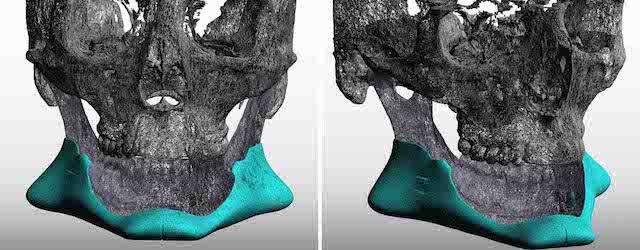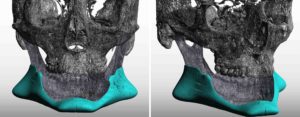Background: A custom jawline implant has a total reshaping effect on the lower third of the face. It does so by virtue of its surface area coverage with a complete augmentation of the entire inferolateral surface of the lower jaw from angle to angle. This makes it the biggest type of facial implant that can be placed by both surface area and volume. (such implant volumes range for 8 to 27 ccs)
Healing of the total jawline implant occurs by an expected biologic response which is isolation from the surrounding tissues through scar encapsulation. This is what occurs with any implant placed in the body whether it is for medical purposes or just for aesthetic enhancement. What is unique about jawline implants, which is well known from chin implant experience, is that bone overgrowth can and often does occur. It is seen most consistently at the jaw angles where it is much more robust than ever seen in chin implants. Due to the elevation of the periosteum and the thick masseter muscle a generous osteogenic response occurs. This typically covers the superior border of the implant, and if one is unaware of this osteogenic response, may to be able to ‘find’ the implant.
These typical biologic reactions around a custom jawline implant has great relevance when re-entering the implantation site. This is most commonly done in replacement surgery when the patient has decided they have a better implant design after seeing what the initial implant aesthetically accomplished. While one would think that such a decision is a rare occurrence, it is actually not.
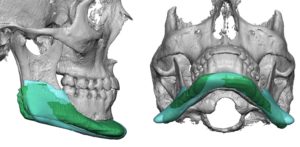
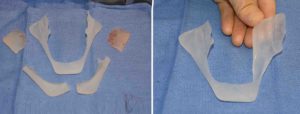
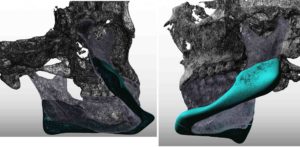
Case Highlights:
1) Custom jawline implants are not infrequently replaced due to patient desire to adjust the implant’s dimensions to what they now are as an improved design.
2) Custom jawline implants are associated with significant encapsulation and differing amounts of bony overgrowth at the jaw angles.
3) Depending upon implant size a previous one-piece placement may need to be replaced with a split insertion technique due to the encapsulation.
Dr. Barry Eppley
Indianapolis, Indiana

